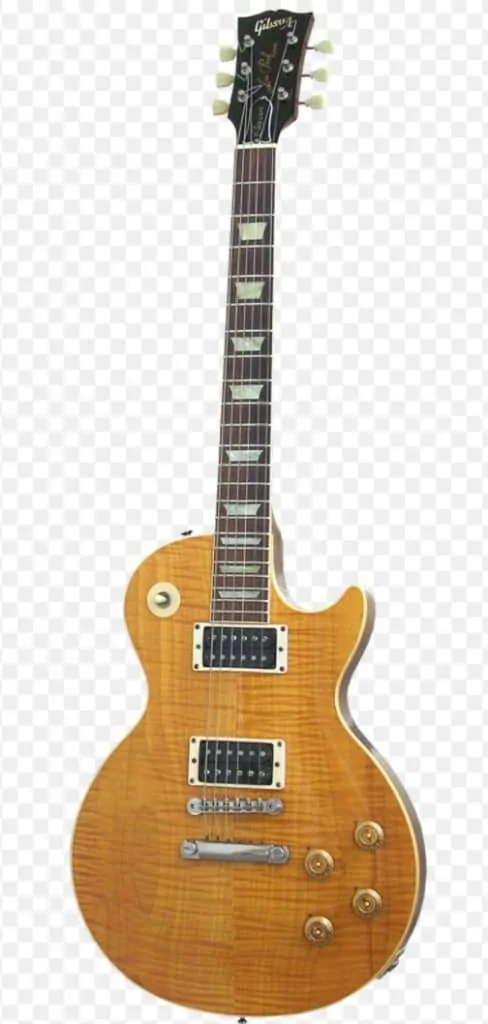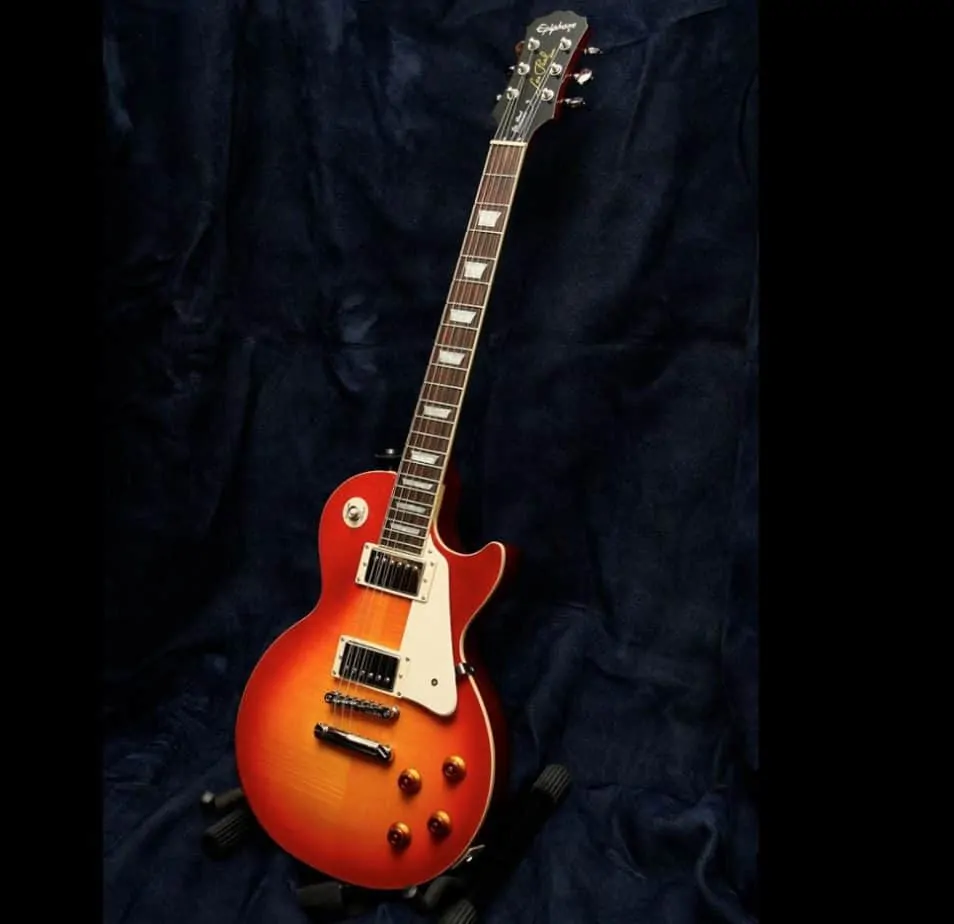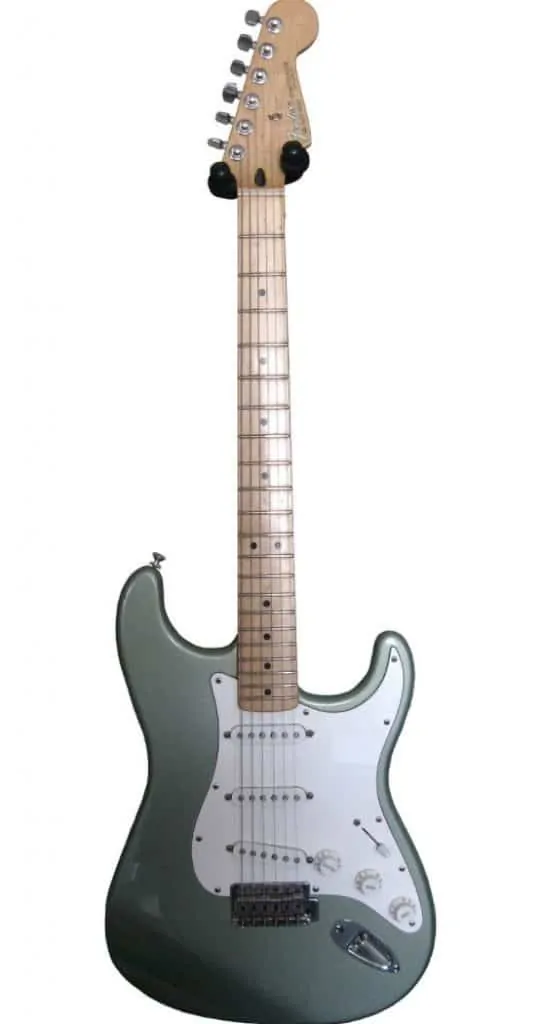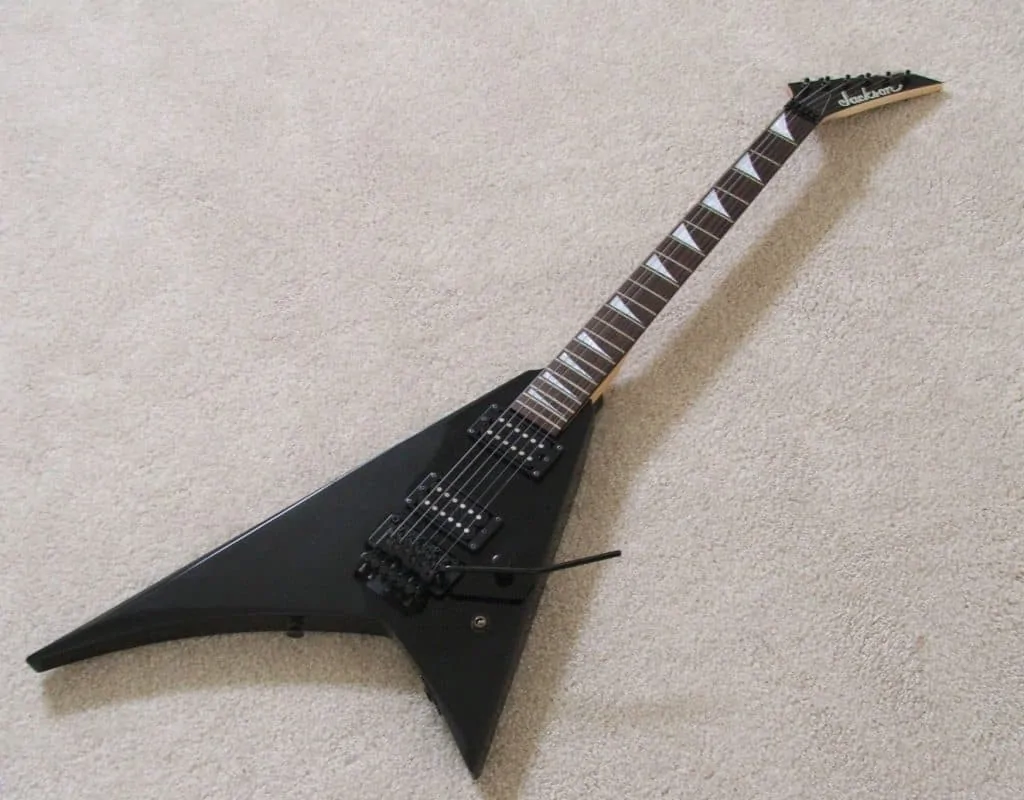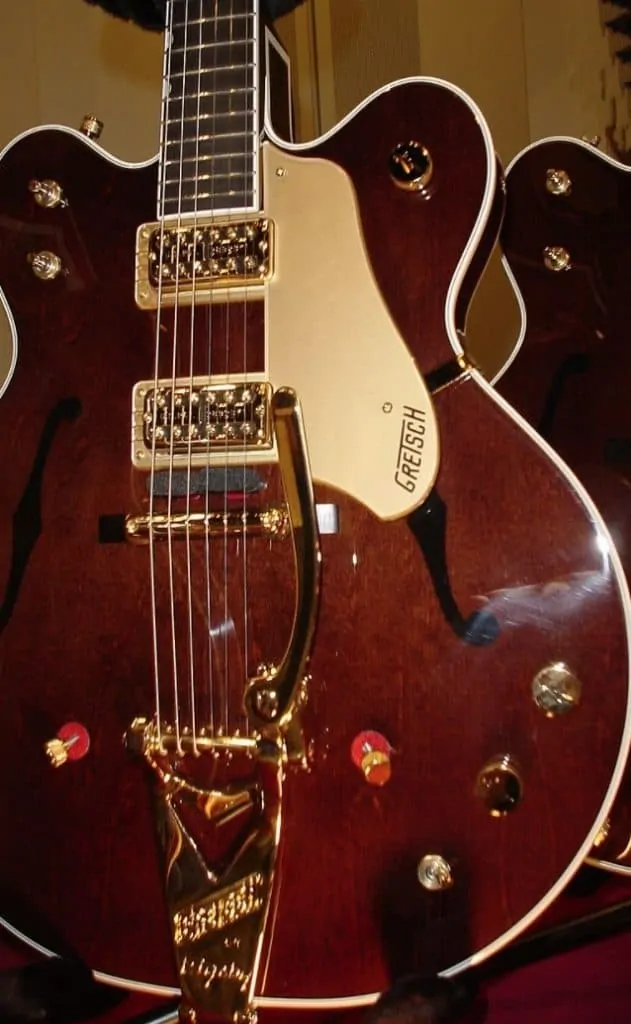At BeginnerGuitarHQ, we want you to have the biggest grasp over the guitar as you possibly can. This includes everything from crafting the tone perfect for your needs, to learning to become a virtuosic performer. One of the most important things about learning guitar, is choosing your instruments. As such, we’ve provided you with a general overview of the differences and similarities between ten of the best electric guitar brands in the world.
In this important guide, we’ll look at ten familiar names, and what makes them so interesting.
If you’ve always wondered what makes guitar brands so different, then take a look below.
Contents
First Things First
We could go into detail on the ins and outs of every single guitar brand in history and what makes them so different and special in their own way for ever and ever. But we can’t do that. Instead, I’ve selected ten of the most famous guitar brand names out there and looked at them in terms of price, appearance, tone, feel, and ‘iconicness’.
This way, we have a semi-objective scale with which to compare each of these excellent instruments.
Gibson
Gibson LP Classic by I, Piso17 / CC BY 2.5.
Gibson is one of the most recognisable names in the entire music industry, and it makes a lot of sense why. They, as most guitarists would agree, have one of the best sounds in the world. This comes from a few things.
Firstly, Gibson guitars are typically fitted with humbucker pickups, giving off an incredibly warm, thick sound. This also avoids hum, and allows the guitar to be a little louder in general. As such, some might claim that Gibson guitars are well-positioned to have a good deal of overdrive added.
To play, Gibson guitars are typically a little heavier than their counterparts, while their necks are often slightly thicker than most. To some, myself included, this creates a slight learning curve when developing your playing with the brand. Of course, this is completely subjective; there are millions who would prefer this feel to that of any other guitar.
In terms of their place in history, Gibson might be the single most iconic brand ever. You’d be hard-pushed to find a famous guitarist who hadn’t used a Gibson at some point in their career, while the likes of Slash, Jimmy Page and Angus Young are known for their commitment to the brand. As such, their ‘iconicness’ could be the most impressive thing about Gibson guitars.
Some may say that this is down to their appearance. There are a lot of guitar brands that just look like… guitars. Gibson guitars look like Gibsons. The Les Paul, for example, is their most well-known export, and uses that beautiful rounded shape and (often) golden colour to look beyond brilliant.
The price is one of the major factors that keep many entry-level guitarists away from the Gibson brand. As a maker of premium, and in many cases, incredibly famous, guitars, Gibson’s prices are almost always in the thousands. There make the occasional model that dips below this price point, but it’s relatively rare. As their guitars become more antique or iconic, prices can approach the millions.
Finally, Gibson guitars are known for their longevity. As they are built from some of the most premium materials in the world, the guitars can withstand a lot, and many original models from the 1960s will still sound as brilliant today as they did more than fifty years ago.
Epiphone
Epiphone Les Paul Standard by Yutaka Tsutano / CC BY 2.0
Technically, Epiphone is one of the many brands that are actually owned by Gibson. This gives them a strong connection to a major name, thus increasing their legitimacy tenfold. However, their market sector is completely different.
Rather than targeting famous musicians and high-level guitarists, Epiphone is typically a brand that focuses on entry level guitars. This means that many Epiphones can be rather cheap, while imitating many of the aspects of fully-fledged Gibson guitars.
In terms of appearance, there really isn’t much difference between Epiphone and Gibson guitars. An Epiphone Les Paul, for example, looks pretty much the same as its big brother, so unless someone were to look at the end of your headstock for the name, you’d be able to convince most that you had access to some of the most high-end guitars in the world.
The main differences between the two come in terms of production, build and sound. Epiphone guitars are mass produced, and, as they need to save money in order to sell the instruments for less, they use less premium wood.
While it isn’t as desirable, the end result isn’t a million miles away from that of a Gibson. Epiphones don’t have the same longevity, but for a good while, they’ll sound almost as good as a true Gibson. The warmth and big, thick sound will always be present in both.
In terms of ‘iconicness’, Epiphone can never really compare to Gibson. There are a select few who like Epiphone’s higher end models even more than Gibson, but you’d be hard pushed to find a successful guitar player who’d choose an Epiphone over a Gibson .
Fender
If there is one brand that can fight off Gibson in terms of fame, it’ Fender. They’ve been around for an incredibly long time, and have been played by some of the most famous guitarists of all time, from Jimi Hendrix to Eric Clapton.
First of all, Fender’s look completely different to Gibson guitars. While Gibson is known for its curvy body and the delicate beauty of the likes of a Les Paul, Fender looks a bit more normal. Some would suggest that Fenders are more attractive, but they just… aren’t. Having said that, they’re instantly recognisable and equally as iconic as Gibson.
There is a lot of difference in construction, feel and sound, though. Fender guitars are focused on a more distinct brightness than Gibsons. As mentioned above, the Gibson brand is all about warmth and size; Fender love brightness. There is a distinctive twang in the tone of most of their guitars, and that comes from a few design choices.
In general, a Fender might feel a little lighter, easier to hold and get used to playing, and have a thinner neck. Beyond this, most guitars made by the brand use alder and ash wood. This wood helps promote that bright sound more than the dense weight of a Gibson’s mahogany would.
Fender’s also have single coil pickups typically. While humbuckers quite literally buck the hum of a guitar, they also bring down the brightness. If you want a Fender, then this brightness is probably one of your main priorities. As such, a single coil pickup will give you that thinner, more chiming sound.
The price point of most Fender guitars is around the same as that of most Gibsons. There are slight fluctuations, of course, but in general, if you’re looking for a high-end version guitar under either brand, you should expect to fork out a sizable sum of money.
Squier
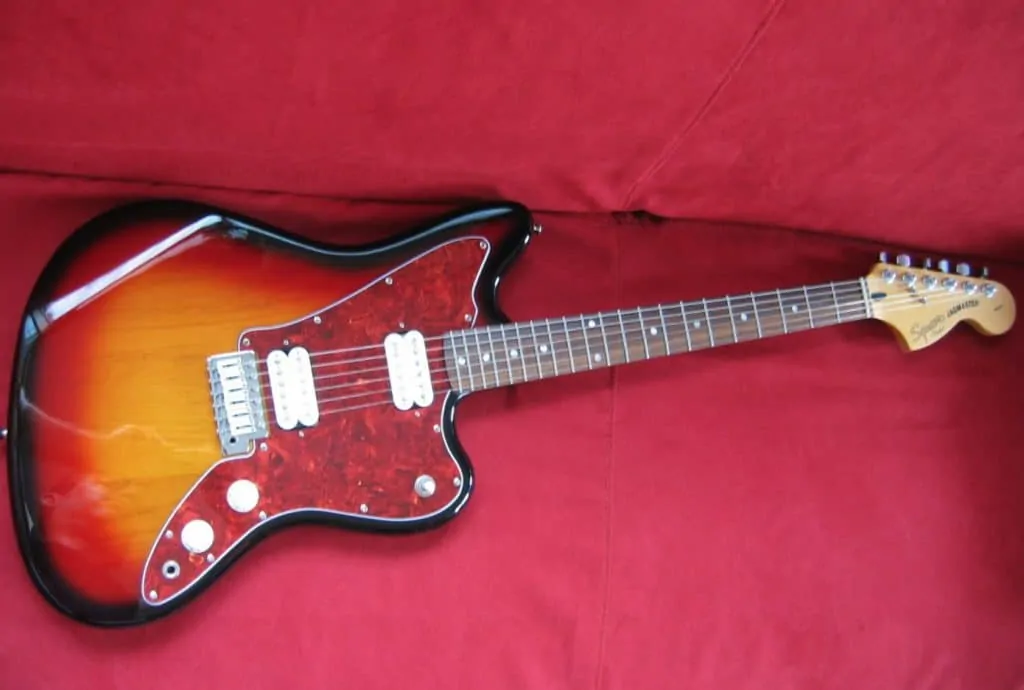
Much like Gibson’s Epiphone brand, Fender have their own entry-level cousin, Squier. There are a lot of similarities between the way Gibson uses Epiphone and the way Fender uses Squier. The most prominent is price. A Squier guitar will be drastically cheaper than a Fender, but in some cases, you’ll feel it.
In my opinion, Squier is a much more entry level brand than Epiphone. You can get some seriously impressive guitars out of both, but from my experience, Squiers are a little more clunky and a little less impressive in tone. Of course, they’ll look and feel basically the same as their big brother, but they lose out on ‘iconicness’ and tone.
The wood that makes up a Squier is often of relatively low quality. At one point, plywood was used to create terrible instruments, but they have since elevated to slightly better options, such as basswood and poplar. This will impact things like warmth vs. brightness, as well as weight and overall feel. As a whole, though, the presence of these different woods and their impact on the finished product comes mostly down to personal preference.
The hardware, such as bridges and tuning pegs, is of much worse quality on Squier guitars. They are unbranded, and, unlike Epiphone, aren’t particularly comparable to those found on their higher-end siblings. The end result is often a clunky, easy to break set-up that can be a challenge to upgrade. Their pickups are also worse, avoiding Fender branded options and homing in on volume more than the tone of the instrument. This will impact the sound of the guitar, but if you are a true beginner, the chances are that you won’t be able to tell to too much of a degree.
In general, I’d say that Epiphone is a much better starting brand than Squier, as there seems to be much more emphasis on mass-production here than in Gibson’s brand. Having said that, for total beginners, there are very few ways to get a guitar which is so cheap (cheaper than Epiphone, often) that still can sound really good.
Ibanez
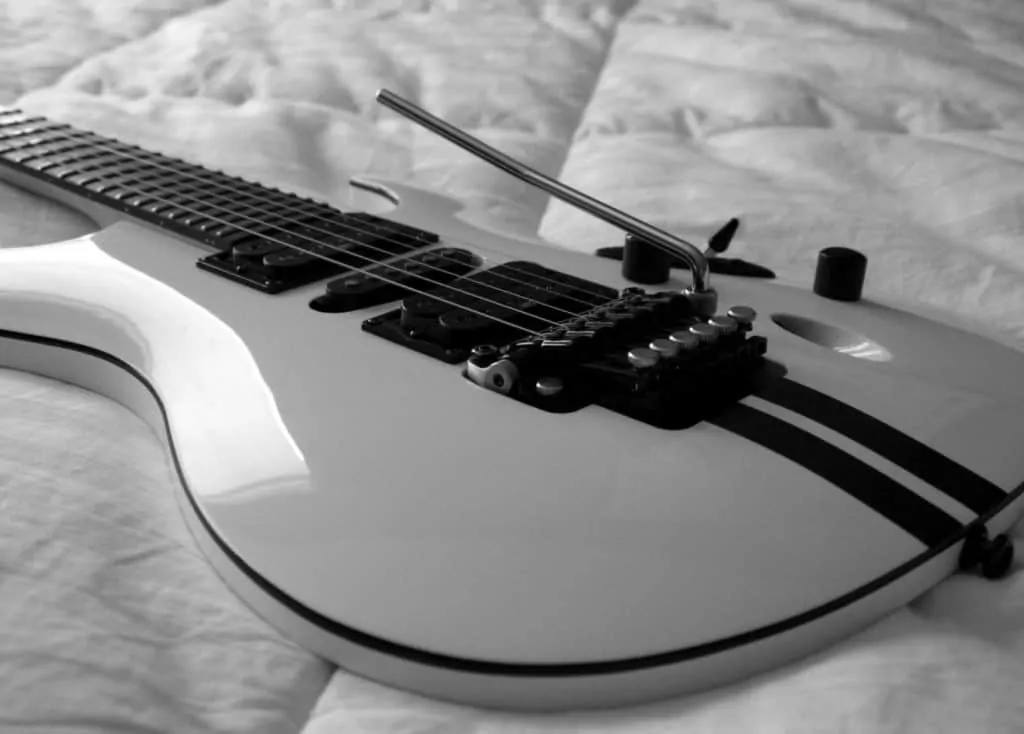
The Ibanez is the first guitar on our list that is typically associated to a certain genre of music. Metal. The screaming tone of the Ibanez is known around the world to shredders and riffers, and it has become synonymous with the heaviest end of the genre. Of course, that doesn’t mean it’s exclusive to that particular musical style.
The mantra behind Ibanez is performance, precision and power. This means they can craft instruments that are easy to get used to and will be on your side in live settings, they’ll be able to get the exact sound you need from them, and will be able to do so with a serious dose of volume and a crunchy overdrive.
In the 1980s, Ibanez suddenly became one of the most well-known guitars in the world. This was a time when guitarists needed speed; the likes of Joe Satriani and Steve Vai were on stages around the world shredding like nobody’s business. This makes the brand one of the most iconic of all time.
The reason they could play Ibanez guitars so fast was thanks to a few things. The first, is a typically thin neck that allows the hand to wrap around with ease. The second is a low action, that makes it smooth and sleek to run around the fretboard. Many Ibanez guitars also have deep cutaways in the body that allow their players to access the highest frets that many other brands keep somewhat out of reach.
As Ibanez aim their guitars towards metal players, you’ll see a lot in their tonal configuration that reflects that. For example, their string tension is often suited to drop tunings, while their pickups will typically be dual humbuckers to cancel out the buzz of the high gain of a metal tone. There are also many Ibanez guitars that have tremolo systems specifically designed for effects like divebombs to be carried out without impacting the guitar’s tuning.
Beyond their sound and playability, they really look the part. You’d be hard pushed to find an Ibanez that didn’t look incredibly sleek, modern and aggressive. Their finish is smooth, their edges are often sharp and harsh, and they don’t shy away from some truly bizarre colour schemes. That said, they like to keep a finger on every pulse, and even have a few very classic looking models that give off huge jazz vibes.
The pricing of the Ibanez range is particularly interesting. While you’d be hard-pushed to find a truly cheap Fender or Gibson, there are plenty of Ibanez guitars lurking in just about every price range possible. This means you could pick up something for many thousands and play one of the most reliable instruments ever, or even grab yourself an entry level guitar and see if you get along with the feel and sound of the brand.
Rickenbacker
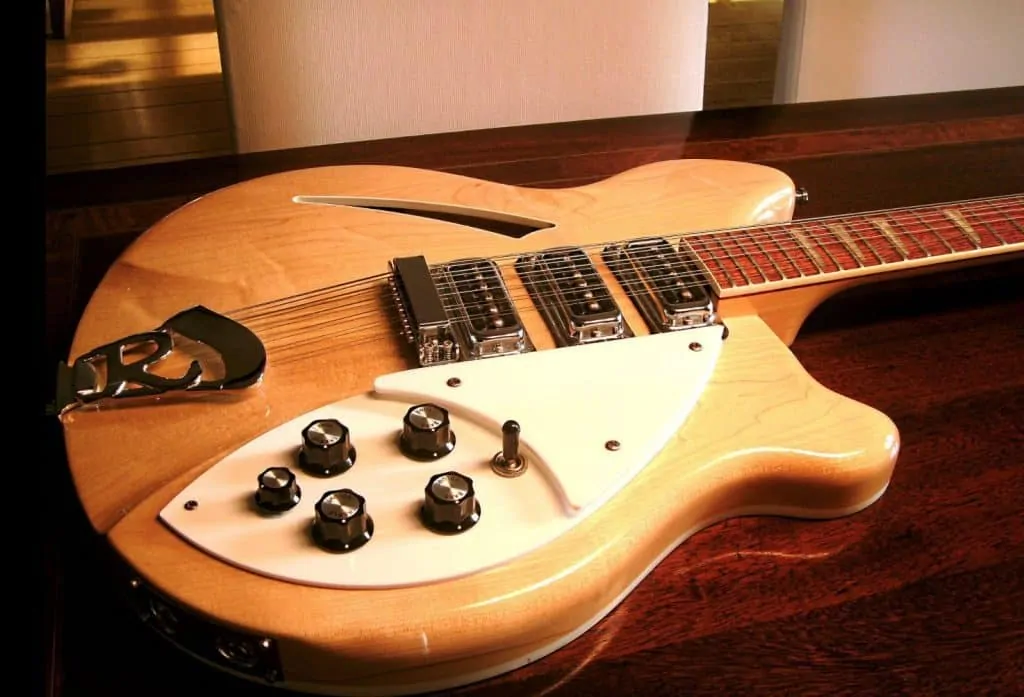
In general, you might associate the name Rickenbacker to the bass guitar. While their 12-string guitars are the favourite of many, their 6-string instruments aren’t the most well-used in the world. Their basses, on the other hand, were played by Paul McCartney, Lemmy Kilmister, Cliff Burton, Chris Squire and Geddy Lee. Yes, some of the greatest bassists of all time. This is interesting, because they’re also known to be the first producer of electric guitars.
Anyway, we’re here to talk about their guitar tone, and while it can’t be considered one of the most iconic of all time, there is still a lot to say. In fact, there is a very specific tone that comes with a Rickenbacker guitar that is hard to get from any other instrument.
The reason Rickenbacker isn’t the guitar of choice anymore is because the sound they create just doesn’t fit into most modern music. They have a twangy, jingly sound that is mostly good for rather upbeat music. You can imagine strumming away at some chords with some falsetto harmonies over the top; you can’t imagine it delivering a heartfelt solo or a brutal metal riff. In fact, while it’s obviously possible, many Rickenbacker players would consider it a sin to put overdrive onto the sound of the instrument. I suppose, in many ways, this makes the Rickenbacker tone a sacred thing.
That said, it also lends itself well to a psychedelic sound, which the likes of Tame Impala have harnessed today. This is thanks to that bright twang, once again. A very thin neck, single-coil pickups and some beautiful woods all contribute to that distinctive sound. To some, it’s the perfect guitar tone. To many, it isn’t even close.
If you fall in love with the Rickenbacker sound, then you’ll be drawn to it forever. It means your taste in music is probably quite classic, which works well in terms of the instrument’s appearance; classic. You won’t find anything in their range that doesn’t look like it’s been plucked straight out of the 1960s. Annoyingly, however, you won’t find anything cheap, either. Rickenbacker is a legendary, premium brand. All you can hope for is a second hard bargain if your budget doesn’t stretch that far.
PRS
Paul Reed Smith Studio by Christopher Schiebel / CC BY-SA 4.0
PRS is considered to be one of the most diverse brands in the world. Not only do they have a portfolio of guitars that covers just about every possibly niche a player could ever want, but each of the guitars within that range have the capability to do just about anything.
Their legendary status isn’t exactly that of Gibson or Fender, but as the world of guitar modernises, they’re certainly getting there. One particular band who are known for their use of the PRS is Opeth, and that just about sums up why PRS is one of the best guitars in the world for a constantly genre-bending musical world. Opeth mix death metal, folk, classical, jazz and just about anything else in their music. This means that, as a band, they view PRS as the best brand to shift instantaneously from acoustic emulation to the crushing heaviness of death metal. I can think of very few guitars that can do that.
In terms of construction, PRS guitars can differ quite hugely. As a brand that wants to be able to offer its players both premium, high-end instruments and more accessible entry-level guitars, their choice of woods can vary a lot. For example, their flagship Custom 24 guitar uses Mahogany mostly. This creates a warm sound that many link to that of the Gibson brand. In terms of hardware, they provide tremolo systems that can allow access to the Ibanez squeal, as well as humbucker pickups to prepare for the aggression of metal overdrive. At the same time, they bring a certain level of brightness that isn’t often found in Gibson guitars, but more often Fender instruments. As such, the Custom 24 is considered a middle ground between the two iconic guitars.
In my option, PRS are consistently the most beautiful guitar brand in the world. They take a little from Gibson to get that rounded body, but also there are hints at Ibanez through the cut-offs in the body. However, for me, it’s all about the finish. Their choice of colours and the beautiful wooden patterns that flow through are just incredible. If you want to look good while playing, you can’t go wrong with a PRS.
Jackson
Jackson Randy Rhoads JS20-1 by Eugene Zelenko / CC BY-SA 4.0.
While Ibanez is one of the first choices for metal players, they know how to diversify their brand. Jackson, however, seem to be stuck in a bit of a metal-only bubble. This doesn’t mean their instruments are unusable for other genres, but to most, Jackson is very specifically for fast playing and distorted tones.
One of the first things to note is their affordability. As they aren’t one of the biggest leaders in the guitar world, they are able to price slightly lower by being constructed with slightly less of a premium finish. You can get expensive Jackson guitars, but there are plenty of entry-level instruments out there.
In terms of appearance, there is also a lot of variety. Some of their most famous guitars have the aggressive Flying-V shape that is very much associated to metal, but they also have more Strat-like instruments that have a more classic, less brutal aesthetic. Despite this, the lack of one distinct look and the fact that they are typically only used in one genre means that they aren’t overly iconic.
They use high quality wood, though. Rosewood necks and a maple body are found commonly, giving a nice tone to their production. Their necks are particularly impressive, as they are designed with speed in mind. They know their players are going to be tearing up and down the fretboard, so the action is low, the frets are accessible and it is as rugged as anything. You can also get a good sustain out of the instrument, and their tone is consistent in its quality.
Gretsch
Gretsch G6122-1958 by CasinoKat / CC BY-SA 3.0
Gretsch has a very specific aesthetic in their guitar output. Their most well-known instrument is the beautifully huge-bodied, hollow-bodied, bigsby-tremmed guitar. It’s classy and classic in appearance, giving off a specific sound that is almost instantly recognisable. Of course, they make acoustic guitars, basses, drum kits etc. as well, but they really have found a niche to consistently lead.
In terms of pricing, Gretsch is pretty consistently affordable. You’ll occasionally see one of their instruments tip into the thousands, but in general, you’re looking at a few hundred for a guitar with great performance. Their wider range isn’t as well-used, but the specific hollow body output I mentioned above is incredibly iconic. To be honest, getting such an impressive hollow-body guitar for such an affordable price is really quite impressive.
The first thing to point out is that Gretsch has the built-in advantage of their most recognisable tone being completely theirs, because it is connected to that hollow-body sound. This makes it great for practice, as it’ll be loud enough to hear without being plugged in. When plugged in, it becomes a completely different beast, pushed forward by (typically) combinations of mahogany and maple. The end result is a fierce attack and a long sustain, as well as a warm sound.
The semi-acoustic nature of the guitar makes the addition of distortion complex but not impossible, though you aren’t going to see it used in death metal any time soon. Their pickup configuration sees two Black Top Filter’Trons helping to make the traditional Gretsch sound shine through. It helps cut out any fizz, while also boosting the highs. This gives their instruments a well-rounded finish, that doesn’t specifically focus on either warmth or brightness.
Yamaha
The final guitar brand on our list is Yamaha. They are one of the biggest names in music, but the Yamaha name isn’t necessarily associated with guitars very often. Their range of keyboards is one of the most diverse in the world, for example. However, that doesn’t mean Yamaha aren’t there to help gift a guitarist with a great sound.
They combine a certain traditionalism with some modern movements, and are generally known for their acoustic output. They’ve also got a great handle on the beginner electric market, too. For example, a Yamaha Pacifica will not come close to breaking the bank. I’d like to point out that, in exchange for such a low price, you won’t be getting an instrument with as much longevity or poise as a many of the brands mentioned above. However, for someone who has just taken up the guitar, you can’t go wrong.
The Maplewood of the neck helps add a brightness to the top end of the instrument, while rosewood of the fingerboard keeps warmth within. This is comparable to that balanced Gretsch sound. At the same time, they offer you single-coil pickups if you’re wanting to guide that bright sound more in the direction of a Strat, as well as humbuckers, meaning you can also add a serious bit of distortion without the worry of annoying buzzing.
In terms of appearance, many Yamaha electric guitars look a little like many of their competitors. For example, the Pacifica is basically a Strat that you can tell isn’t as high in quality. This has really help back Yamaha from becoming one of the leading figureheads in terms of actual quality, even if they have a massive reach across the market.
On the whole, though, Yamaha is a good choice for true beginners. They are a guitar that is designed to last you a few years in good condition, before your playing ability take you beyond them, and their guitar starts to give up on you. But that isn’t a flaw; that’s what they’re trying to do.
In Conclusion…
There is a lot of choice in the electric guitar world. There are certain brands mentioned above that want to tap into a specific market, and therefore provide you with a playing experience that really suits something. There are, of course, other brands that try to be much more general.
While your playing style is crucial in determining which brand you are going to choose, other factors are incredibly important. Budget and appearance, for example, could make or break a decision. At the forefront, of course, is tone. You’ll make a completely different decision if you wanted a guitar that can play in any style with a warm, full tone than if you wanted something harsh and death metal ready.

